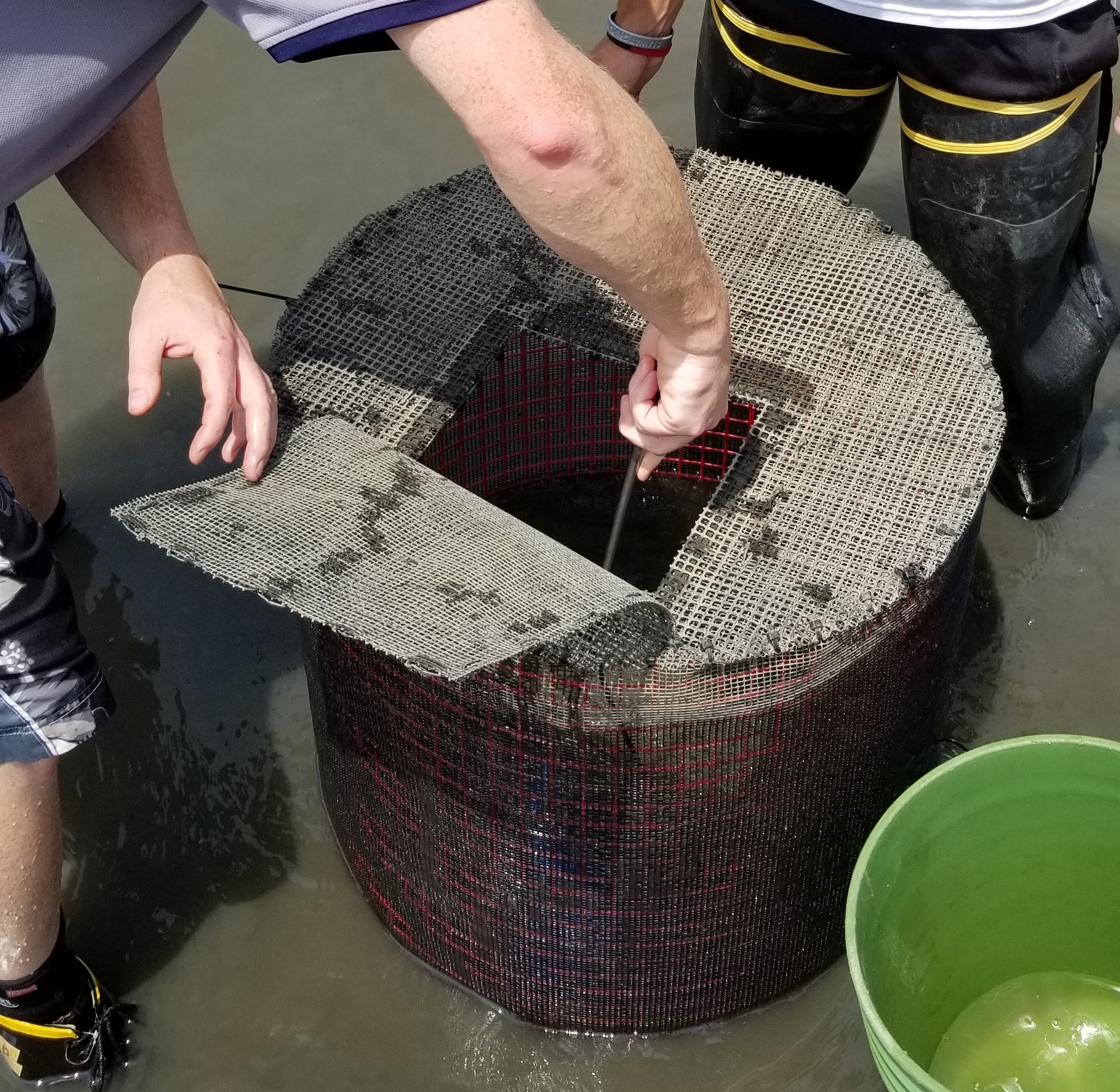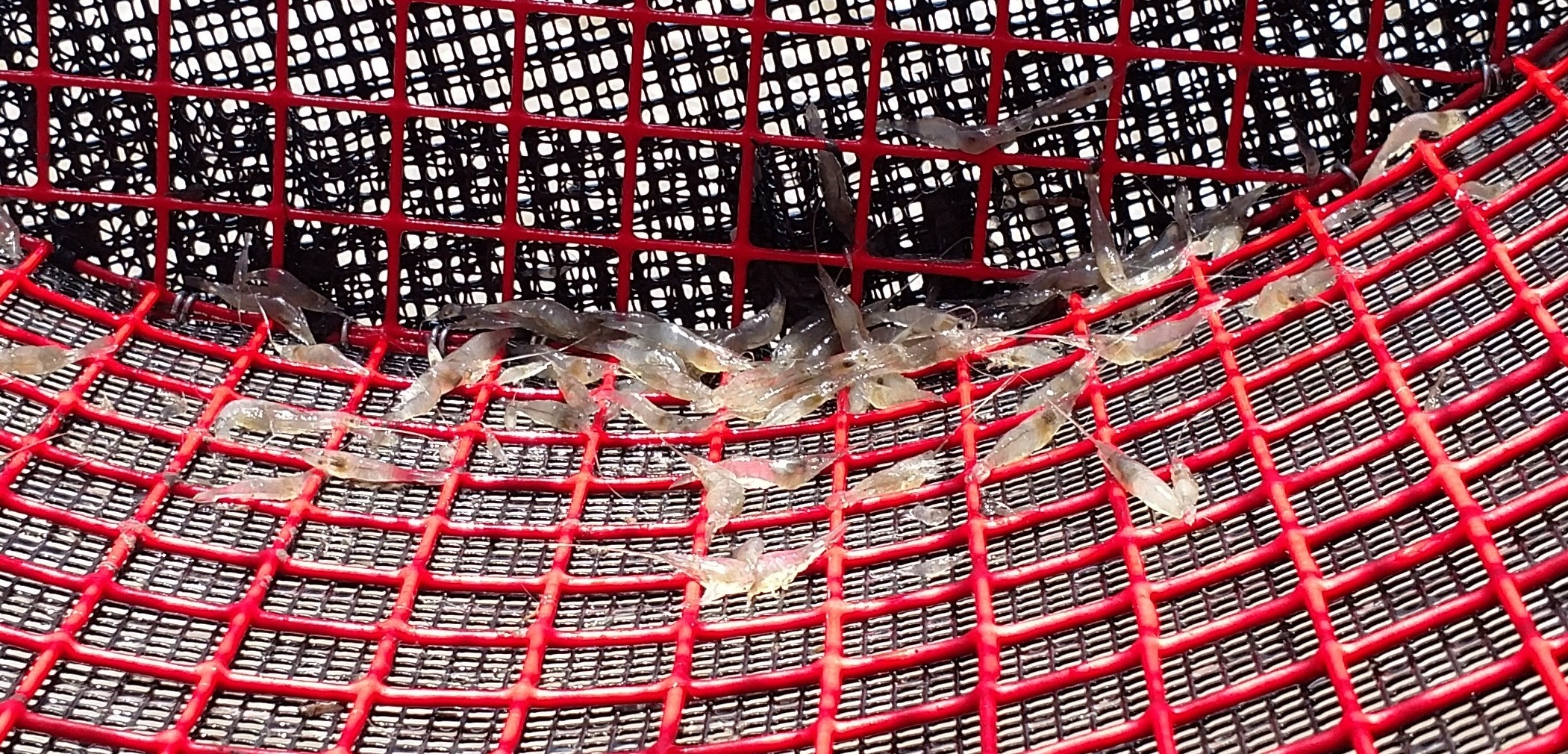We are working to improve our ability to rapidly assess the impacts of oil spills by building on field and laboratory toxicity studies that were key to the Deepwater Horizon oil spill nearshore assessment. Our primary goal is to develop protocols for field-based mesocosms that are ready to use with future spills to reduce the potential loss of information during the immediate aftermath of spills. Our research will identify species and develop equipment best suited for field-based mesocosms.

Why We Care
Following the Deepwater Horizon oil spill in 2010 there was a lack of “ready to use” methods to assess the impact of the spill on species residing in Gulf of Mexico salt marshes. NOAA researchers have decades of experience conducting in-situ bioassays, also known as field-based mesocosms, and saw a need to develop a system to rapidly deploy native fish and crustacean species in the field for immediate data collection following future oil or chemical spills.
What We Are Doing
We are using field-based mesocosms to develop guidelines for assessing the coastal ecosystem impacts of oil and chemical spills. We are researching and developing of a system that will be “ready to use” for such assessments immediately following spills and can be applied to different locations around the United States. The result will be a product (protocol and apparatus) that can be used by NOAA and other oil spill response agencies following spills to collect valuable toxicity data.
This is a two-year project. The Year 1 product is a proof-of-concept (feasibility) report outlining the prototype apparatus, selected test species, basic methodology, and proof of control survivorship resulting from reference field trials. Year 2 will deliver a complete set of cages for spill response and an instruction manual for cage construction and use.
What We Found
In Year 1, we answered the following questions:
-
- What are the potential target test species (invertebrates and small forage fish) to be considered and the best life history stages (adult, juvenile, and or larvae) to use? We determined that mummichogs and grass shrimp are the ideal test organisms for our region, and we will attempt to use these species along the Gulf of Mexico coast in Year 2.
- What are the endpoints to be considered (mortality, survivorship, growth, reproductive potential, or other sublethal endpoints)? We determined that multiple endpoints could be considered, but our pilot study focused only on survivorship for periods up to three weeks.
- Can the test organisms be collected from local waters, or will they need to be obtained from a commercial provider or aquaculture operation? We recommend that test organisms be collected regionally to avoid the potential for introducing non-native species or pathogens.
- How will the appropriate and accessible deployment and reference sites be selected (taking into account depth, tidal range, current velocity, salinity, and bottom substrate)? We determined that deployment sites must have water present at low tide to ensure that there is enough water to support the animals, but also shallow enough to be accessible by foot when securing them to the bottom. We successfully tested cages in a high current velocity environment (a worst-case scenario in terms of current velocity), thus they should be able to be deployed in most, if not all, sites of interest.
- What is the best type of cage, enclosure, or corral needed for each species to be tested? We tried several prototypes and determined that a cylindrical bait pen with mesh secured to the outside was the most successful in containing the animals.
- Will individual organisms need to be tracked over time or caged individually? Animals can be grouped together in a single cage and replicated in multiple cages
- How many replicates need to be deployed at a site to achieve adequate statistical power? Can we demonstrate repeatability? A minimum of three cages of each type of animal should be used to demonstrate adequate statistical power.

Next Steps
Our main objectives for Year 2 were to choose the best cage design and method of securing cages by testing at a local reference site and then to build a set of cages for deployment in the Gulf of Mexico. We drew on expertise within NCCOS and the NOAA Office of Response and Restoration’s Assessment and Restoration Division to select suitable deployment sites along the Gulf of Mexico coastline. Based on these consultations we selected a site near Corpus Christi, Texas, where one or more deployments of the recently devised protocol will be performed to test the cages. As final products, we will provide the NOAA Office of Response and Restoration’s Assessment and Restoration Division with a protocol or standard operating procedure, along with a complete set of deployment cages.
